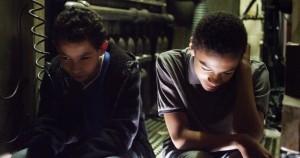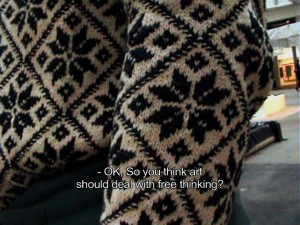An exhibition as a space of writing and as a space to be written
The Ferme du Buisson contemporary centre d’art is committed to a policy of exhibition, production and publication that testifies to its active support for contemporary art. From October 2012 to January 2013, it presented Ent(r)e, a solo exhibition by artist Loreto Martínez Troncoso. “Entre” (meaning “enter” or “between”), could be the watchword of the centre d’art itself. An invitation inscribed on the pediment of a place that prides itself on being open to all, at the junction between viewers and artists, between various disciplines. This journal shows the close, lasting relationship between the artist and the place, and how each is nourished by the other.
readCOME ALONG!
First and foremost it’s an invitation.
From the moment you emerge from yourself/from your home,
it means sharing something with someone else.
Moving from the inside world to the outside world…
Making yourself available.
Opening up…
Opening.
Opening doors…
“Doors open 45 minutes before start”
“Opening hours and entrance fees”
“De martes a domingo de 10:15 a 17:30”
“Free entry”
“Admission charge”
(if you don’t pay you aren’t free; if you’re not free you pay)
Information given in programme announcements: on paper, the web, radio…
Information accompanied by “on now”, “archive”, “future”, “parallel activities”, “information”, “team”, “contact”, …
There are also word-of-mouth invitations
(in Castilian: de boca a boca or de boca en boca).
You give someone boca a boca to restore their breathing.
You’re taking care of them.
You also take the mouth of someone with or/and in your mouth when you kiss them.
Love them.
It’s a declaration of love.
To the Other.
ENTER
(– you’re frightened of going in?)
COME ON
…
VEN!
Dear readers,
These notes are based on practice, not on theory.
Writing/reflecting based on practice, desde: from, después: afterwards
ENT(R)E
Title of the project, the exhibition (since we are dealing with an exhibition)
But what is an exhibition? (a question I ask myself often, as my practice is mainly immaterial and ephemeral)
And/or when does it start? (thinking about the title… thinking about announcing it…)
With the “r” between brackets, we have ente in Castilian: what is, exists or can exist.
(if we put the “n” between brackets, in French it would also give “être” [to be]: In Spanish ser (to exist) estar (to be in a place, to be in some kind of state)
It is also a direct invitation.
(to you…)
To enter a place, to come into a world.
It is a summons to a meeting.
(between you and me… between you and someone else… – What’s going on?)
A meeting with a place…
Which is not an isolated place. Which is set in a landscape.
Also a meeting with everything you see, experience, pass through to get there.
(…)
But what is a place? A building? A set of people? An economy? A history? What context are we working in? Not just physical, but political, economic and social too… Who are its inhabitants and who are not?
Who determines this working context, sets it up, and how can we juggle with it? How can we appropriate it, shift it and/or transform it. Elasticize it? Because if you don’t leave it, you work with it, from it. Hence the question: Where are we speaking from?
“I’d like to explore the underground world. To set out in search of those forgotten places (…)
I would map those lost places, I would pierce holes in the foundations,
before returning to society from the underground world.”
And he goes on:
“It would be a question of bringing art out of the galleries and taking it into the sewers.”
[in 1970 Gordon Matta-Clark dug a hole at 112 Green Street to see the foundations in order to release the building’s huge, compressed, trapped forces via this simple hole: “It would have been great to be able to pass freely under a zone that used to be governed by the laws of gravity.” (in Gordon Matta-Clark, Entretiens, Edition Lutanie, 2011)]
Considering what exists, considering what has existed, what has taken place and what is there, latent… Its history, its configuration, its transformations… Becoming aware of the way in which its architecture conditions our behaviour. Where we go in by, where we go through, and where we leave/or could leave by, or would like to be able to leave by.
– apprehending space, meeting it, working with it, from it (with the time that involves, involves for you).
– making hidden zones visible (tapping on all the walls to hear if there is air behind them; photos of the art centre before the last renovations: two rooms used to communicate with one another; the floors were not black… upon my arrival: the floor is covered with a dance mat).
– revealing places that are hidden from the viewers’ eyes, and opening doors to get into places that are not accessible to the public.
– creating openings where there are none or revealing old openings that are today walled up => for improved concentration? perception? contemplation, isolation –> loss of contact with outside, life outside, with where you are going, where you are
– (reread Kafka’s The Burrow.)
A wall is not just a surface you hang or screw or project something on to. It is also a material, a thickness, a layer…
– But why hang something on a wall when the wall itself is a much more stimulating material? (architecture as an organism, hence living)
“And we are in hell, and part of us is always in hell,
immured as we are …
in the world of bad intentions.
(…)
Think that a simple word, a name, is enough to shake the walls with your strength.”
Pierre Reverdy, Risques et périls, 1930
–> Michael Asher’s intervention at the Teselli gallery in Milan in 1973: He threw sand at the walls to the point where he removed all the layers of paint and arrived at the “beginning”, eso sí, with the (violent?) trace of the erosion of the gesture.
…a wall: a cavity, a dwelling-place – I often think of los topos who used to live hidden behind walls and under floors during the Franco period.
…in the end not something that separates, or… that does so by default – I think of the neighbours we hear upstairs or downstairs or in the adjoining bedroom.
– introducing movement into a static structure; dynamism -> making it appear (haunt)
– more controlled, more delicate gestures (rubbing down, sanding) and more uncontrolled, rougher, more aggressive gestures (breaking)
– removing, dismantling, deconstructing… to reconstruct somewhere else (?)
– shifting, moving a wall like you open a door or turn a page
Would going into an exhibition not be being present, going in, experiencing this time of reading and writing?
(further on)
I’m thinking of a bedroom.
I’m thinking of a house.
I’m thinking of a place that is lived in and for living in.
A place in which you spend some time …
(as a host and as a visitor).
I’m thinking of meetings…
It is a place of meetings (with a place, with those who live in it, those who work in it, those who come often or from time to time, or are there for the first time, by chance…)
–> the piece Samson (1985) by Chris Burden at the Henry Art Gallery, “monumental in scale”, which is only a criticism of the institution?
– challenging the idea we have of limits
– (noted, further away: “prison is on the outside”)
– (noted, close at hand: “Too much space stifles us far more than if there wasn’t enough of it” Supervielle, Jules –> also speaks about: “external vertigo” and “internal immensity” in his book Gravitations)
The question of the viewer, his/her involvement, participation, responsibility? – the word “responsibility” disturbs me – perhaps realization? (…) His/her participation. His/her involvement. Getting involved. Becoming a friend, becoming an accomplice. We are not the only ones – or… yes (?) – or the only one … to.
[+ isn’t staging an exhibition also a desire to get close to others? To their needs? But what availability do I have, what virginity? My desire… to forget myself, uneducate myself, unlearn. To leave my suitcases at the door and make myself available, to let myself be surprised. (unplanned meetings –> surprise –> coup de foudre). Borges says “art arrives”. And “for me, it happens like that: all of a sudden I feel that something is going to happen and it is at that very moment that my soul, my consciousness, is in a passive state, and I wait.”
– Vale, pero, qué pasa.
– ¿Será el duende?
– …
+ where is emotion and where does this disdain for it come from. For speaking about it. – “disdain for emotions” (disdain – desprecio, distrust – recelo, rejection – rechazo) + shame at weeping, but… alone or in company? – Francisco’s story, he was moved and his emotion went “silent” when he sensed the presence of another viewer. Where has… Where has the flesh gone?
–> practices like Michael Asher’s, where it is more about perception, sensation, than analysis (I’m thinking of his piece, intervention, gesture where he created a draught in space, caused it to be felt.) Or… a terremoto, an earthquake.]
(some time later)
The exhibition as speech (?)
A gesture is a spoken word.
Any gesture is an act.
A spoken word act
Spoken word that constitutes an act.
A gesture that constitutes an act …
A question of who it is addressed to.
(we always address someone (?) or, a gesture doesn’t come from nowhere)
The need for an addressee (?)
An exhibition as a space of writing.
(space as a blank sheet)
An exhibition as a space for writing.
(through what is offered and also through the reading, writing of the visitor, the other – incomplete writing, writing as soliloquy, with no other)
And also a written space.
(which has already been written on by others; that is inhabited by others, by voices)
A past, a present and a future (a future unknown to us; a future “construction” created and reported on by the person who experiences it)
An exhibition as a meeting.
And when there is a meeting, a world unfolds, opens up, stretches out before me.
Openings… on to a boca con boca.
But how and exactly when does a meeting take place?
– I know why you came in.
– Why?
– Because something has happened to us.
– Things don’t happen like that. In a day…
– Sometimes it takes just an instant. I was saying to myself this afternoon that it was like a flash of light. That grips us completely!
(to be continued)
Pour en savoir plus :
Centre d’art de la Ferme du Buisson
Loreto Martinez Troncoso
Special
Issues
EDITO
NOTE OF 1st APRIL
Yangon, 40°C → Paris, 10°C
Myanmar → French
three seasons (rainy, winter, summer) → four seasons (spring, summer, autumn, winter)
THERE IS A DOOR BETWEEN LOVE AND HATE . . . (moe satt, 1st April)
“ I know this will be the last time
but I am not sad It was time
to leave you cause I love you
to leave you cause I hate you
to leave you cause I hate you
I know this will be the last . . . .”
* Emma Dusong, The Door, 2013
Opening doors…
“Doors open 45 minutes before start”
“Opening hours and entrance fees”
“De martes a domingo de 10:15 a 17:30”
“Free entry”
“Admission charge”
(if you don’t pay you aren’t free; if you’re not free you pay)
* Loreto Martínez Troncoso. “Entre” (meaning “enter” or “between”)
I NEVER SEE A GHOST BUT GHOST CAN SEE ME . . . (moe satt, 1st april)
a guest + a host = a ghost
(December 1953, Marcel Duchamp)
“the boundary between fantasy and reality is blurred”,
“we are faced with the reality of something that we have until now considered imaginary”
BLUR THE BOUNDAR BETWEEN SITE AND WORK . . . (moe satt, 1st april)
The Edge-Stones connect the Vière site, revealing the expansive force contained in the hamlet, which counters the invisible action of the mountains that set the village firmly in its own area.
* (Fabien Faure)
Élodie Royer: Could you talk about the inflatable you’ve made for the show?
Hans-Walter Müller: What’s very important in an art exhibition is that there’s a contact between the inside and the outside, a continuity. But without feeling that you’re outside. So the modular floor in the exhibition doesn’t touch the inflatable at all, it’s like an island.
*Abitacollection, interview with Hans-Walter Müller at La Ferté Allais, 30th august 2012
the exhibition space was my body, and talking to the public about my relationship with them was actually an analysis of my relationship with the table that was standing on my body…
* (Adva Zakai)
CAN OBJECTS TELL STORIES? (moe satt , 1st april)
These objects are evidence, revealing a social and economic environment.
A closer look allows us to obtain a more complex vision than just a wasteland.
My work is easily carried around and I react to situations, so residencies are a great context for it.
* (Pauline Bastard)
– They’re camouflage designs for boats, they used them to disguise warships in the First World War. Check it out,
* Olivier Bosson
“Power No Power is a work around power but also an act of empowerment of a group of youngsters who, because of their social destiny, have only very little power.”
* (Claudio Zulian)
“This object or this event might be anything and perhaps nothing”- with this I simply mean- art is not related to any specific object, material, or situation. It is profoundly true that anything can be art. Can. Potentially, anything can. Even nothing can.
* (Dora Garcia)
CONTENTS
there is a door between love and hate . . .
THE CENTRE RÉGIONAL D’ART CONTEMPORAIN LANGUEDOC-ROUSSILLON
THE CENTRE D’ART CONTEMPORAIN DE LA FERME DU BUISSON
i never see a ghost but ghost can see me . . .
THE CENTRE D’ART CONTEMPORAIN - LA SYNAGOGUE DE DELME
blur the boundar between site and work . . .
THE CAIRN, CENTRE D’ART
LE PLATEAU / FRAC ÎLE-DE-FRANCE
LE QUARTIER, CENTRE D’ART CONTEMPORAIN DE QUIMPER
ABOUT
Bolstered by its success and visibility, uncoupdedés.net is restarting and subjecting existing content to new voices. In 2014 and 2015, several personalities from outside France will be asked to become our editorial writers for one season. Their task will be to place the contents of the whole magazine in perspective, presenting them differently through the prism of their subjectivity and their own work contexts. Catalina Lozano (Colombia), Zasha Colah (India), Moe Satt (Myanmar) and Manuela Moscoso (Brazil): each guest editor will reformulate the actions of the centres d’art, various aspects of which they will have been able to perceive through the magazine. Each editor-in-chief will “roll off” a cross-cutting text, presenting an original re-examination of the resolutely fluid geography of the centres d’art. uncoupdedés.net repeats the challenge from the poet Mallarmé, resurrected in the cinematographic art of Jean-Marie Straub and Danièle Huillet (Every Revolution is a Roll of the Dice, 1977). The guest editors, coming from a variety of disciplines, will widen the circle of expression even more. Choral and fragmentary, uncoupdedés.net takes just as much after puzzles as it does after memories, and naturally calls for cut-outs of every kind…
•
MOE SATT
(Yangon, Myanmar)
Moe Satt is an artist who lives and works in Yangon, Myanmar. After graduating in 2005, he is part of a new generation of Burmese artists to emerge after 2000 with a different approach to conception and embodiment. In 2008, he founded and organized Beyond Pressure, an international festival of performance art in Myanmar. As a performance artist, Moe Satt has performed in galleries and also on the streets of Yangon. He has actively participated in live art festival in Southeast and South Asia, and occasionally in the West.
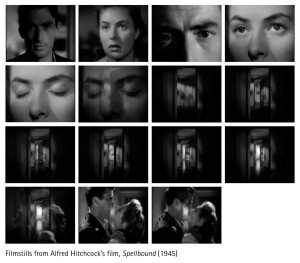
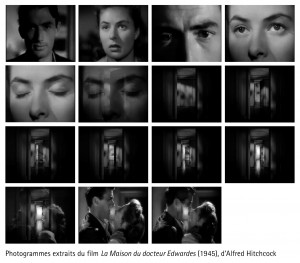
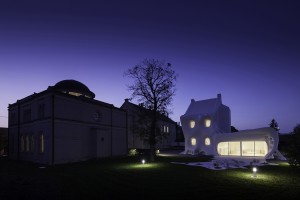
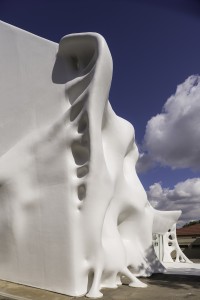
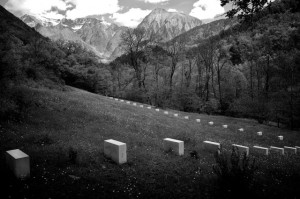
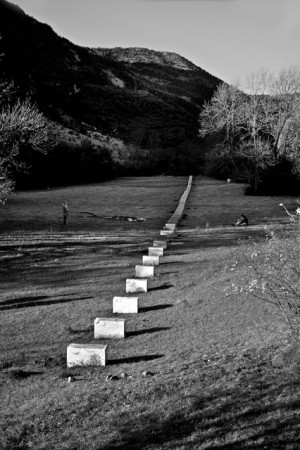
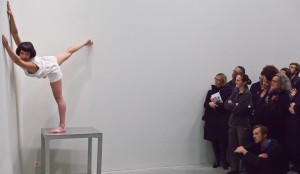
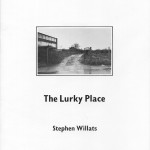
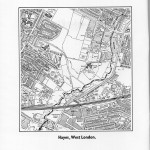
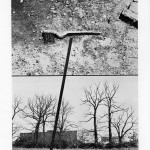
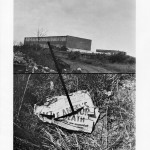
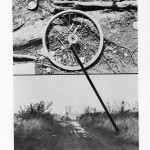
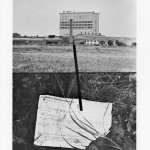
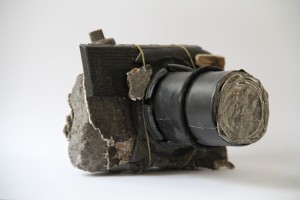
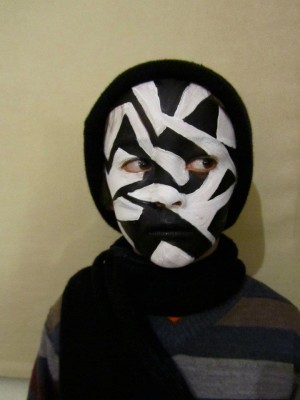
![PILIPA : - C’est des motifs de camouflage de bateaux […] Fais une recherche tu verras](http://www.uncoupdedes.net/wp-content/uploads/2013/10/Dazzle-ships_in_Drydock_at_Liverpool-300x378.jpg)
